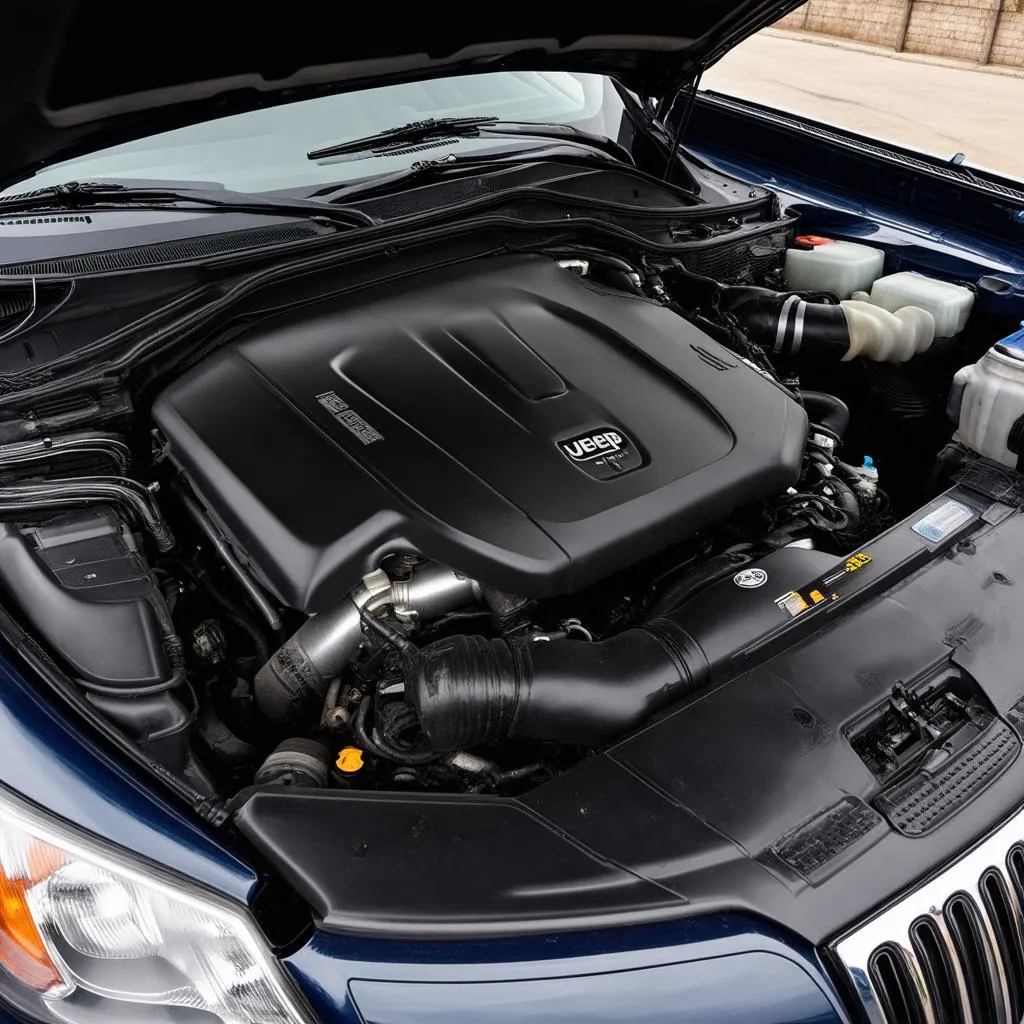“My Check Engine light just came on, and my trusty code reader says it’s P1417. What does that even mean?”
Sound familiar? As a 2005 Jeep Grand Cherokee owner, you might find yourself in this situation, staring at a cryptic OBD code like it’s an ancient hieroglyphic. Don’t worry, you’re not alone! Today, we’ll demystify this pesky P1417 code and get you back on the road with confidence.
P1417: A Closer Look
In a nutshell, the P1417 code on your Jeep Grand Cherokee indicates a problem with the Secondary Air Injection (AIR) System Monitor Circuit Low Bank 1. In simpler terms, there’s an issue with the system designed to reduce emissions during a cold start. This system injects air into the exhaust manifold to burn off any unburnt fuel, reducing harmful pollutants.
But what does “Monitor Circuit Low Bank 1” really mean? Let’s break it down:
- Monitor Circuit: This refers to the electrical circuit responsible for monitoring the AIR system’s components.
- Low: This indicates that the voltage signal received by the engine control unit (ECU) from the monitor circuit is lower than expected.
- Bank 1: This specifies the side of the engine where the issue lies. In a V6 or V8 engine, “Bank 1” typically refers to the side with cylinder #1.
Possible Causes and Symptoms
A faulty AIR system can manifest itself in several ways. You might notice:
- Illuminated Check Engine Light: The most obvious symptom.
- Rough idling or stalling: Especially during a cold start.
- Decreased fuel economy: The engine might run richer to compensate for the unburnt fuel.
- Failed emissions test: Due to increased emissions.
Several culprits could be behind the P1417 code:
- Faulty AIR pump: The pump itself might be worn out or malfunctioning, failing to deliver the required air pressure.
- Leaking hoses or connections: Cracks or loose connections in the air injection system can disrupt airflow.
- Malfunctioning AIR solenoid valve: This valve controls the flow of air into the exhaust manifold, and if it fails, it can cause the P1417 code.
- Wiring issues: Damaged or corroded wiring in the monitor circuit can disrupt the voltage signal, triggering the code.
- Faulty oxygen sensors: While less common, a malfunctioning oxygen sensor can sometimes contribute to this issue.
Troubleshooting and Solutions
Diagnosing the exact cause of the P1417 code requires a bit of detective work. Here’s a possible approach:
- Visual Inspection: Start by visually inspecting the AIR system components for any obvious damage, loose connections, or signs of leaks.
- Check for Vacuum Leaks: A leaking vacuum hose can also disrupt the AIR system. Inspect all vacuum hoses for cracks or loose connections.
- Test the AIR Pump: Listen for the pump running for a short period during a cold start. You can also check the pump’s operation by applying 12 volts directly to it.
- Inspect the AIR Solenoid Valve: Check the valve for proper operation by applying vacuum or pressure to it and verifying that it opens and closes as expected.
- Inspect Wiring and Connectors: Examine the wiring harness and connectors for any damage, corrosion, or loose connections.
A Word of Caution: While some of these tasks can be tackled by DIY enthusiasts, it’s always advisable to consult a qualified mechanic, especially if you’re not comfortable working with automotive electrical systems.
Beyond the Technical: A Holistic Perspective
Interestingly, some car enthusiasts believe that a car’s well-being is not solely determined by its mechanical parts. They integrate elements of Feng Shui, an ancient Chinese practice, to promote harmony and balance within their vehicles. While this might sound unusual, it reflects a holistic approach to car ownership.
Imagine your Jeep Grand Cherokee as an extension of your personal space. Keeping it clean, organized, and clutter-free can not only improve its aesthetics but also, some believe, positively influence your mood and driving experience.
 2005 Jeep Grand Cherokee engine
2005 Jeep Grand Cherokee engine
Your Questions Answered
Q: Can I still drive my Jeep Grand Cherokee with a P1417 code?
A: While you might not experience any immediate drivability issues, it’s not advisable to ignore this code. Prolonged driving with a faulty AIR system can lead to further damage and potentially affect your vehicle’s emissions.
Q: How much does it cost to fix a P1417 code?
A: The repair cost varies depending on the underlying cause and labor rates in your area. It could range from a few hundred dollars for a simple hose replacement to a more substantial amount for a new AIR pump.
Q: Are there any preventative measures to avoid this code in the future?
A: Regular vehicle maintenance, including inspections of the AIR system components and timely replacement of worn-out parts, can go a long way in preventing this and other OBD codes.
Need More Help?
We understand that dealing with car troubles can be frustrating. That’s why our team of automotive experts is always here to help you navigate the often-confusing world of car repairs.
If you need further assistance with diagnosing or fixing the P1417 code on your 2005 Jeep Grand Cherokee, don’t hesitate to reach out to us via WhatsApp at +84767531508. We’re available 24/7 to answer your questions and provide guidance.
 2005 Jeep Grand Cherokee driving on a scenic road
2005 Jeep Grand Cherokee driving on a scenic road
Keep Exploring
- Related Articles:
- Understanding OBD-II Codes
- Common Jeep Grand Cherokee Problems
- DIY Car Maintenance Tips
We encourage you to explore our website for more informative articles and resources to empower you as a car owner.
Let us know in the comments below if you have any other questions or need further assistance. Happy driving!